On February 14th, amidst the buzz of the World Ag Expo, The VINE hosted its second VINE Connect meet-up, this time in Tulare County. This gathering marked the continuation of a series of innovation meetings aimed at growing a regional agrifood innovation ecosystem. At the heart of these meetings is fostering meaningful dialogue among industry, academics, companies, and startups in the sector.
Held at the Tulare County Cooperative Extension Office, a stone’s throw from the Ag Expo, the event provided a perfect blend of networking and knowledge-sharing, as well as fantastic tri-tip sandwiches courtesy of United Way of Tulare County. The day’s cornerstone was a panel discussion moderated by UC ANR CIO and VINE co-founder Gabe Youtsey and featured voices from Western Growers alongside leading robotics startups such as Blue White, Farm-ng, Burro, Bonsai, Verdant and FarmWise. The conversation, touched on several critical themes shaping the future of agricultural technology for specialty crops:
Understanding Grower Adoption of Technology
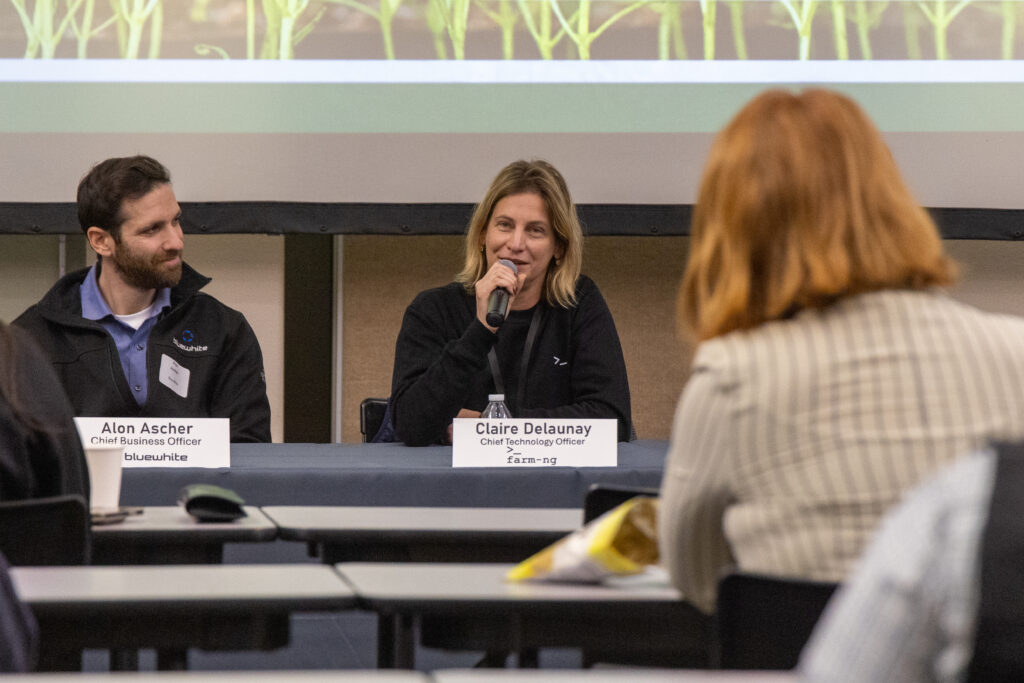

Grower adoption emerged as a key subject for the panel. The conversation delved into real-world challenges and successes of adoption, examining how innovators and farmers can work together to ensure that new technologies align with practical farming needs and realities.
Claire Delauney of Farm-ng highlighted the key role of open-source technology in fostering innovation within the agricultural sector. Delauney advocated for the open sharing of designs and APIs to democratize innovation, stating, “We work diligently to ensure everything is open source, opening all designs and APIs so that we don’t have to bring the final value proposition to the final application ourselves.” This approach aims to avoid a vertical monopoly and establish a collaborative platform where innovation can thrive, thereby accelerating the development and adoption of new technologies in agriculture.
Alon Ascher of Blue White emphasized the importance of ease of use and comprehensive training to facilitate technology adoption among growers. Ascher pointed out that the complexities of robotics and algorithms are kept behind the scenes to ensure that the day-to-day field experience for users is straightforward. This strategy highlights the importance of making advanced technologies accessible and user-friendly to encourage their adoption in farming operations.
Pauline Canteneur of FarmWise focused on the critical need for thorough training and education to ensure successful technology adoption. Canteneur discussed the company’s efforts to ensure that everyone involved, from ranch managers to top executives, is well-informed and enthusiastic about the product. She explained, “Our effort is focused on ensuring that individuals are well-trained and enthusiastic about our product.” This includes a comprehensive understanding of the technology’s value proposition, capabilities, future potential, and its importance as an asset to their operations.
Navigating the Financial Landscape of Agrifood tech Investments
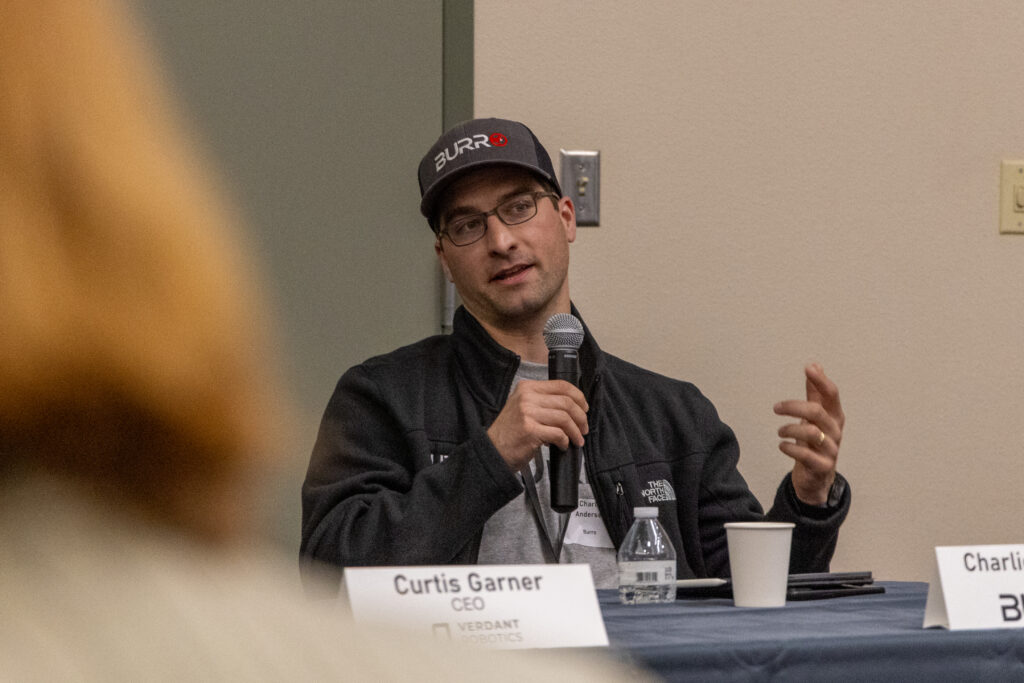
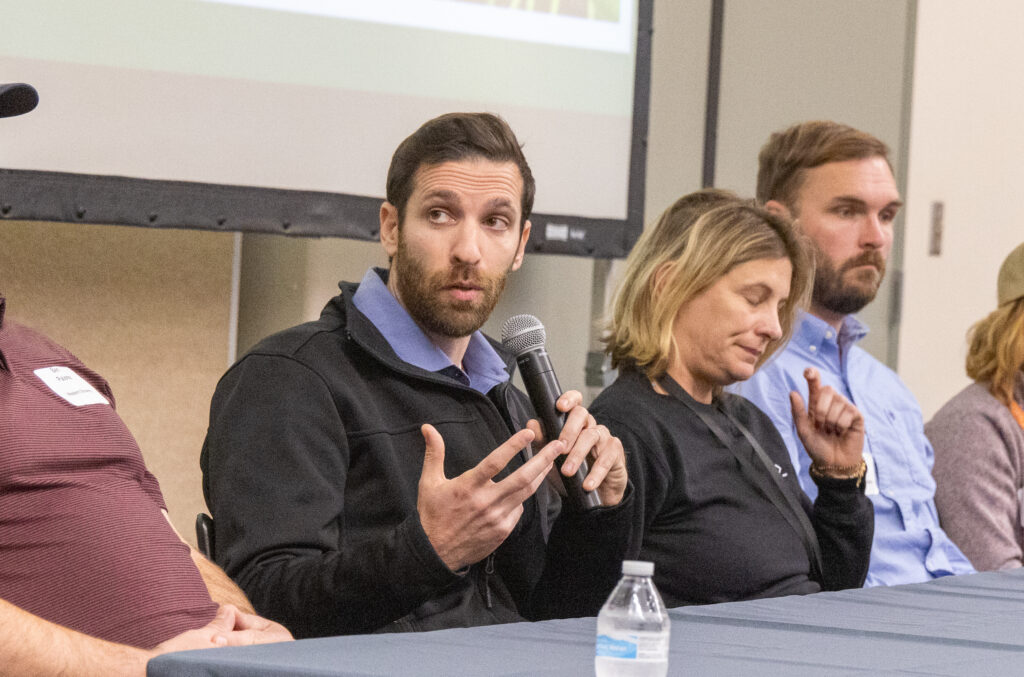
Panelists also unpacked the complexities of investing in agrifood tech, highlighted the essential balance between technological investment and economic viability, underscoring the nuanced approach required to navigate the financial landscape of agrifood tech adoption.
Canteneur emphasized the indispensable role of financial returns, “Without the financial component, we don’t exist. It has to make sense for [growers]; otherwise, we’re not in business.”
Charlie Anderson from Burro elaborated on the methodology for assessing ROI, with a particular focus on utility and labor efficiency. He detailed, “When we assess ROI, we focus on several metrics: the number of days of use per year per system, the percentage of labor offset per day of use per system, and the number of people utilizing the system.” Burro’s approach underscores the importance of maximizing the utility of agrifood tech solutions to ensure they offer tangible benefits in terms of labor efficiency and year-round usability.
Ben Palone of Western Growers touched upon the significance of depreciation schedules and labor cost savings in the financial evaluation of agrifood tech investments. He explained how growers expect agrifood tech machinery to align with specific depreciation schedules and to generate sufficient cost savings to justify the investment, typically within a five-year payback period—revealing the practical considerations growers make when assessing the financial viability of adopting new technologies.
Ascher presented an innovative approach to reducing operational costs through a subscription-based model, combined with smart design, leading to substantial savings for growers. He claimed, “Our business model is subscription-based, replacing operational costs… We’ve managed to show up to a 75 percent reduction in production costs—for growers on the West Coast.” This model represents a shift towards more flexible and cost-effective solutions for integrating technology into agricultural operations, highlighting a path to making high-tech solutions more accessible and economically attractive to growers.
Evolving Workforce and Skill Sets in Agriculture
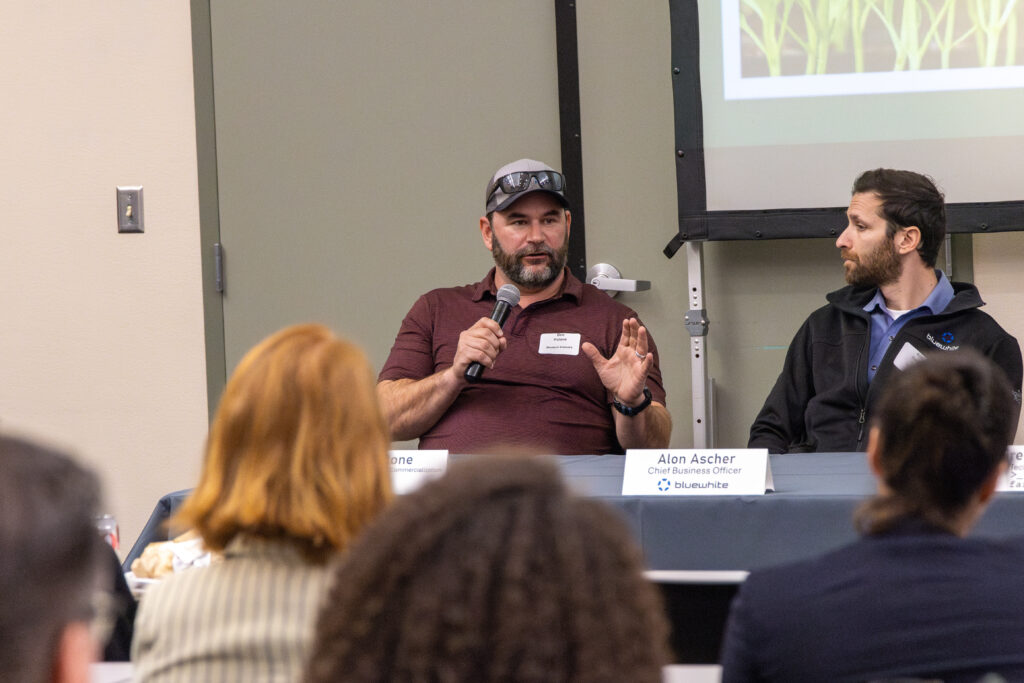

The discussion highlighted the evolving landscape of the agricultural workforce, emphasizing the need for ongoing education and skill development to keep pace with the rapid advancements in agrifood tech.
Curtis Garner from Verdant Robotics highlighted the transformative impact of technology on the agricultural workforce, noting the shift towards a control center model of farm management. He emphasized the importance of adapting current skill sets to meet the demands of this new landscape, stating, “This shift suggests that the foundational skills of current agricultural workers may need to adapt to this new landscape. Witnessing this transformation underscored the potential for education to propel farming into the future.” Garner’s insights suggest a pivotal role for education in bridging the gap between traditional farming practices and the future of agrifood tech.
Echoing this sentiment, Canteneur pointed out the necessity for tech-savvy operators in modern farming operations. She observed that younger individuals, who have grown up with technology, seamlessly integrate into the agrifood tech environment, highlighting a generational shift in the agricultural workforce, with a growing preference for individuals who are not only open to but also proficient in new technologies. “These individuals often grew up with technology, like tablets, at their fingertips, and they quickly adapt to and appreciate the user interface of new equipment,” she remarked.


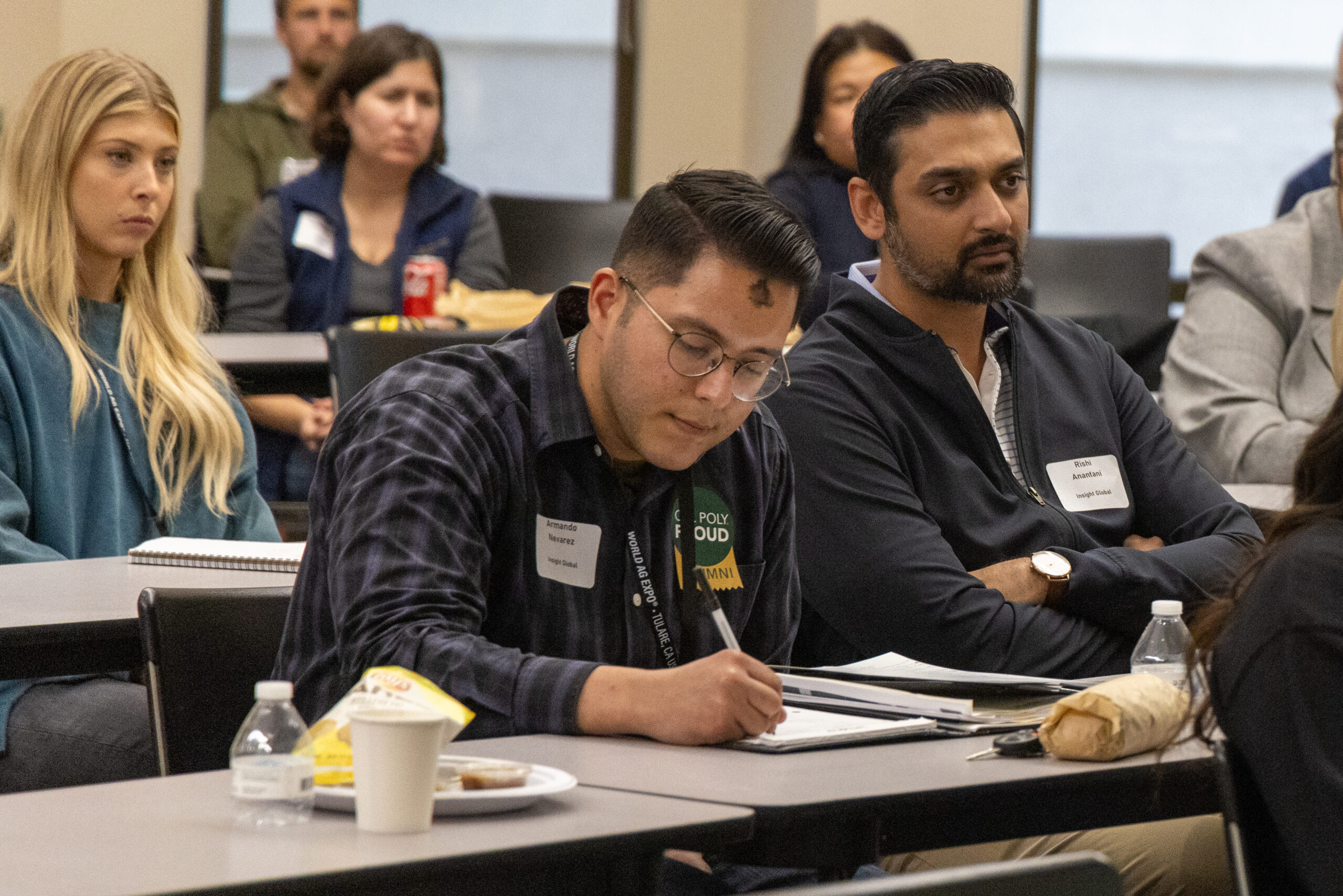
Ben Palone brought attention to the strategic role of internal implementation teams in facilitating the integration and maintenance of technology on farms. He described how these teams operate as an essential support system, ensuring that technology adoption is smooth and efficient. Palone explained, “An appointed internal expert takes responsibility for maintenance, onboarding, and other services provided by the technology companies.” His insights reveal the complexities of embedding technology within agriculture, underscoring the challenges of marrying new technologies with an existing operation.
Delauney praised the efforts to prepare the younger generation for the technological future of agriculture, particularly highlighting the educational initiatives by UC ANR. She expressed admiration for these efforts, stating, “The only thing I wanted to add is a big kudos to UC ANR for organizing introductions to technology for students.” Delauney’s comments reflect a broader recognition of the importance of early education in technology for the sustainability of the agricultural sector.
Envisioning the Future of Agricultural Technology
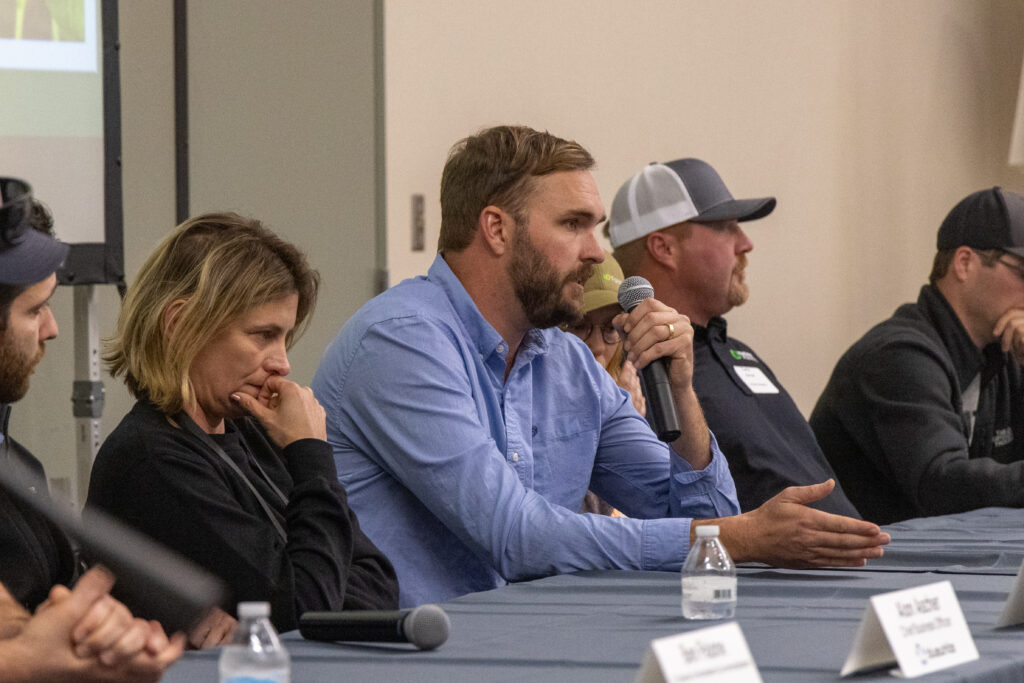
Offering a forward-looking perspective, the panelists shared their insights on the potential transformations within the agrifood tech sector, speculating on the future directions of technology development and adoption in agriculture. These perspectives collectively paint a picture of a technologically integrated and data-driven future in farming.
Anderson delved into the evolution of robotics in agriculture, predicting a shift towards mobility-enabled solutions. He highlighted the rapid progression from static applications in warehousing to dynamic roles in agriculture, stating, “In my view, over the next few years, likely the next decade, we’ll see more companies building mobility-enabled solutions that move around.” Anderson’s perspective suggests a future where robotics become more standardized and form the foundation for further technological innovations in agriculture.
Ascher spoke on the critical need for connectivity among different technological platforms to achieve seamless automation. He emphasized the importance of integrated solutions for the effective automation of agricultural processes, explaining, “Connectivity is crucial. Even with the companies represented here, growers need multiple solutions. If they’re not connected, it’s challenging to manage.” Ascher’s comments underline the necessity for interoperability among agrifood tech solutions to streamline operations and enhance efficiency.
Niday projected a significant shift in agricultural management practices, from broad-acre management to the precision management of individual plants or trees. He envisioned a future where “We’ll gain plant-by-plant insight and have the capability to manage things on an individual basis in real-time with greater precision and accuracy.” This approach, according to Niday, will enable optimization of outputs with efficient use of inputs.
Garner introduced the concept of a digital twin in agriculture. He explained, “This concept of a digital twin…is going to fundamentally change agriculture,” suggesting that digital twins could allow for precise, individualized management and experimentation per plant, at an unprecedented scale.
Delauney highlighted the transformative potential of digitalization in agriculture, particularly in the context of data accumulation and utilization. She pointed out the current limitations in understanding various environmental factors and their impacts on agriculture, stating, “Digitalization offers the ability to accumulate knowledge on an unprecedented scale.” Delauney’s insights emphasize the role of digital technologies in enhancing decision-making and operational efficiency in farming through the comprehensive analysis of data.
Collaboration and Community Support
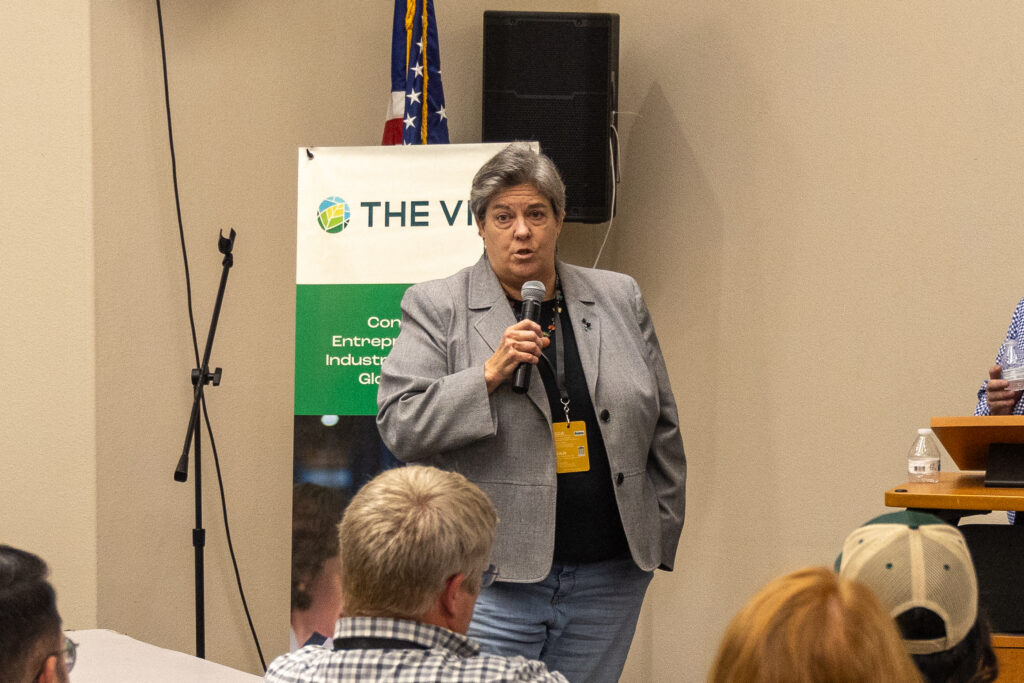
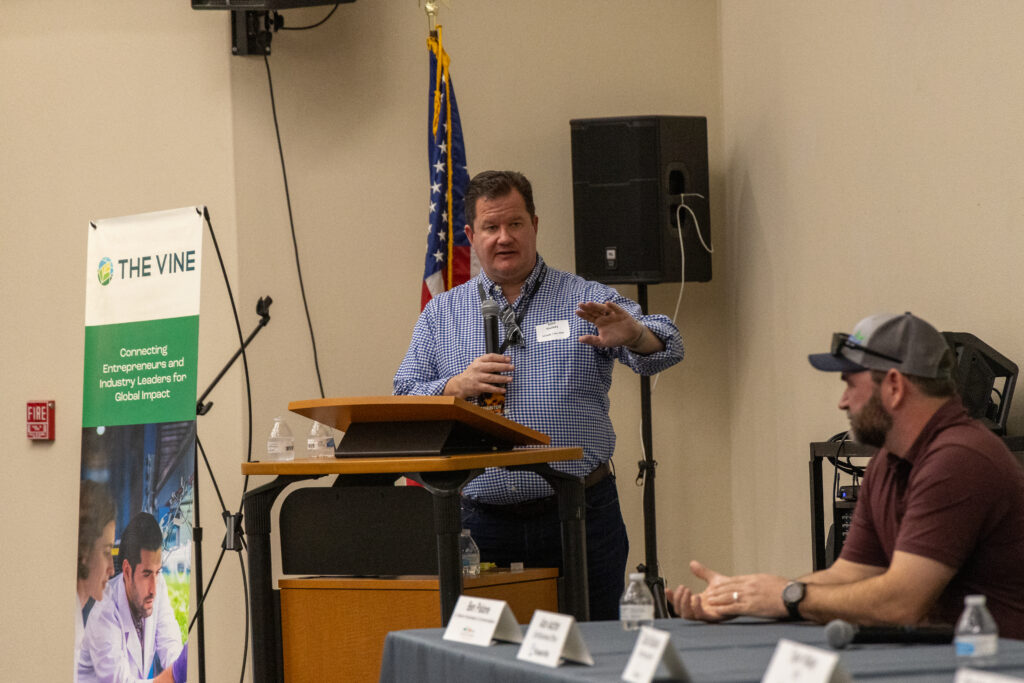
The event highlighted the importance of collaboration in advancing agrifood tech. Glenda Humiston, Vice President of UC Agriculture and Natural Resources, announced major new initiatives to support innovation. Two key UC ANR academic roles were introduced dedicated to support the expansion of agrifood technology in California.
“It’s a big ecosystem with many players, and I view everyone as a partner,” Glenda remarked, expressing excitement about the collective drive within the sector. “We can’t do it alone, and neither can you. Together, we can do amazing work.”
“For agrifood tech to reach its full potential, collaboration across the ecosystem is key,” Gabe Youtsey said, echoing Humiston. “Academics, companies, startups, and, crucially, the farmers themselves must continue to engage in open dialogue, share knowledge, and forge partnerships. This collaborative spirit is essential to overcoming the complexities of integrating technology into the deeply rooted practices of agriculture.”
Reflections and Moving Forward
The VINE Connect Tulare served as a reminder of the benefits of bringing together diverse perspectives to address challenges and opportunities together. As a next step, participants are encouraged to continue exploring collaborative opportunities and to leverage the insights gained from the meeting to drive innovation in their operations. You’re also invited to join us at the next VINE Connect event in Merced on March 6th, focusing on groundwater recharge innovations and partnerships between agrifood tech startups, UC researchers, and farmers. This session, featuring experts like Dr. Thomas Harmon, Dr. Ami Gunasekara, and Dr. Leigh Bernacchi, offers insights into agricultural technology and sustainability efforts in Merced County. Register now: https://www.eventbrite.com/e/the-vine-connect-merced-tickets-831050292797

